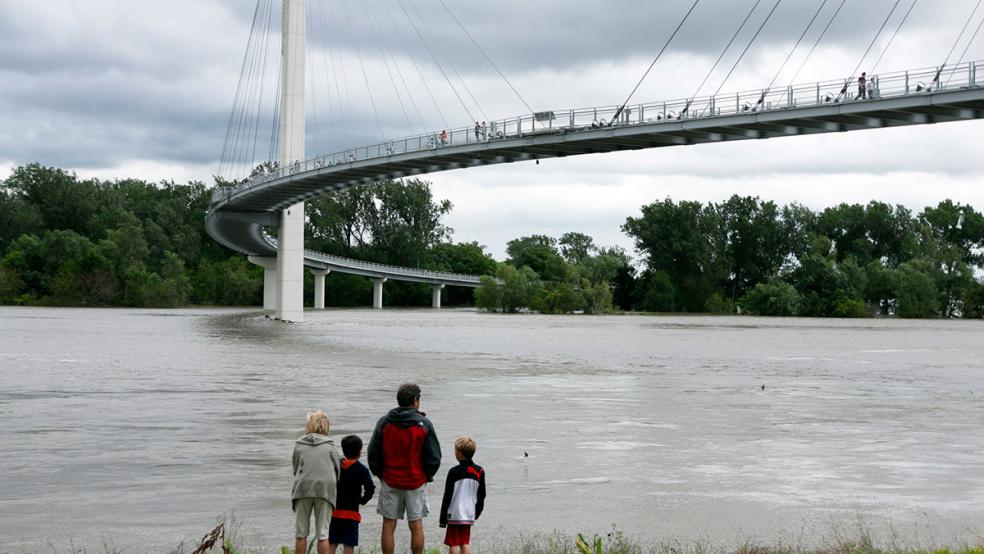President Trump’s plan for tax reform is expected to include substantial infrastructure spending, one of the few issues that offers the potential for bipartisan consensus and progress. Many analysts are calling for updates for our 20th century highways, bridges and tunnels, which are necessary to be sure. But we also need to consider a 21st century approach to infrastructure that will address to our era’s megatrend: an aging society
The aging of America is certain: By mid-century, we will have more old than young in America.
Related: 15 Great Jobs for Retirees
Aging-focused infrastructure would follow in the American tradition of ambitious projects that engage with the realities of the time. In the 19th century, we built railroads that allowed a young, growing population to travel across the continent and seize new opportunities. Our railroads achieved what no other nation could – not Europe across its many borders; not Australia, Canada or Russia, all continental nations. Then in the 1950s, the interstate highway system enabled the growth of 20th century America – an economic prosperity that underpinned American global leadership.
So, what is our equivalent today? Perhaps a vision that is built on America’s 21st century demographic realities, connected to citizenship needs and demands as well as goals for continued economic growth.
Here are some places to start: housing, education for life-long learning, elder caregiving, and healthier urban environments with re-imagined transportation design. Nor should we forget that our rural states need attention, too – just ask North Dakotans.
We need to create the infrastructure for cities and rural environments that enable older adults to continue engaging and contributing to their local communities, while also supporting their healthcare, transportation and wellness needs.
In a new report, “Best Cities for Successful Aging,” the Milken Institute provides a list of cities that are achieving these goals, and an analysis of how they’re doing it. For some it may come as a surprise that most of the successful aging cities aren’t located in traditional retirement destinations like Florida and Arizona. Instead they’re in places like Provo, Utah, Madison, Wisconsin, and Chapel Hill, North Carolina. Why? Though these are college towns, they’re also great places to age, providing widespread employment opportunities, effective health infrastructure and a range of innovative housing options. Instead of cordoning off older adults, they embrace them as a vital pool of workers, consumers, neighbors and community members.
Related: What You Don’t Know About Medicare Could Hurt Your Retirement
Or consider the growing need for more and better housing options for those 50 and older. Currently, roughly 40 percent of housing in the U.S. doesn’t have accessibility design features such as extra-wide hallways and doors, lever-style handles, and safety rails. Sure, retrofitting homes to include these features may not be as big (or expensive) as a 2,000-mile wall, but with roughly 10,000 Americans turning 65 each day, it would do far more to improve the daily lives of Americans.
Alternatively, cities and states could launch programs to encourage or build intergenerational housing, update public transportation for aging and mobility, and creating later-life learning opportunities that flip the education-work-retirement paradigm on its head. That’s what older Americans really want.
Such infrastructure improvements would dovetail with other innovations to address the needs of an aging America. If housing and transportation enable aging in place, then more people can take advantage of in-home elder care, greatly helping the 90 percent of older adults who want to continue living at home. The resulting cost savings would mitigate or entirely pay off the cost of improving infrastructure, as in-home care is privately funded and has been shown to save billions in hospital costs.
Keeping older adults living and working in their communities would also increase the size of the workforce, and help usher out the outdated notion of retirement while tapping the experience of older employees. And it would enable more older American to take advantage of educational programs and training to continually update their job skills.
Related: 8 Things You Need to Do to Get Ready for Retirement
As infrastructure rises to the top of the Beltway agenda, we should reframe the conversation through the lens of an aging. Political leaders and constituents should ask how potential infrastructure plans can be used to reshape our country – literally – to better match the realities we face. This would launch projects that forge bipartisan agreement and provide practical benefits to tens of millions of Americans for decades to come.





